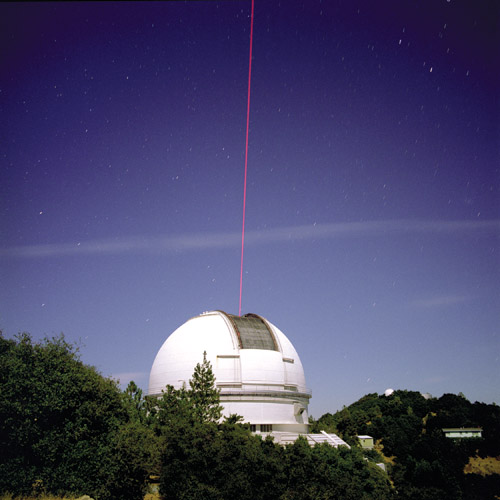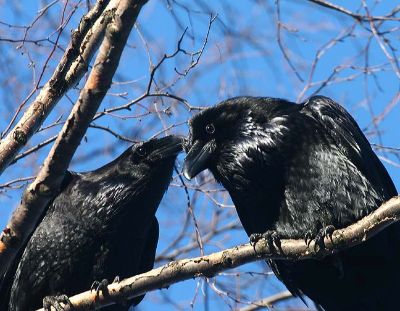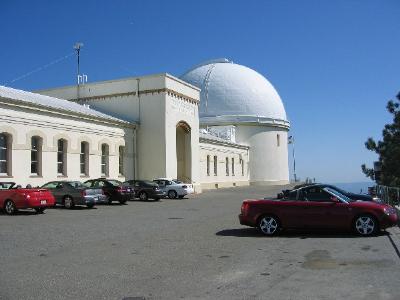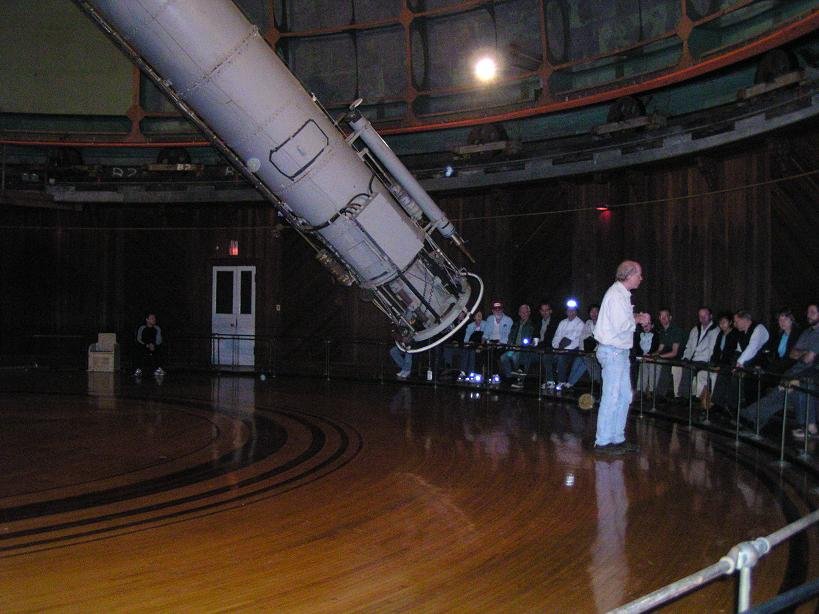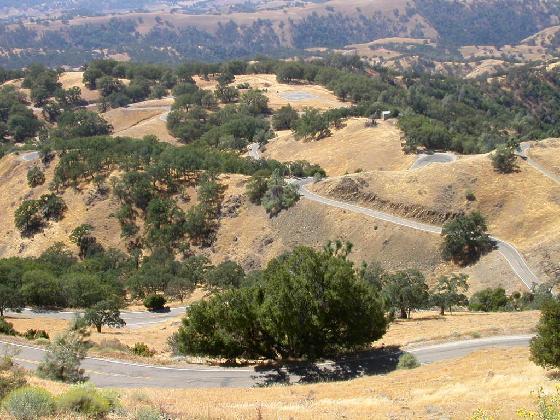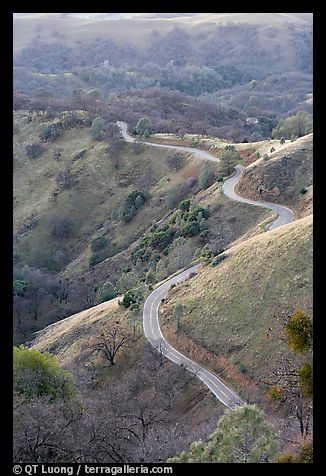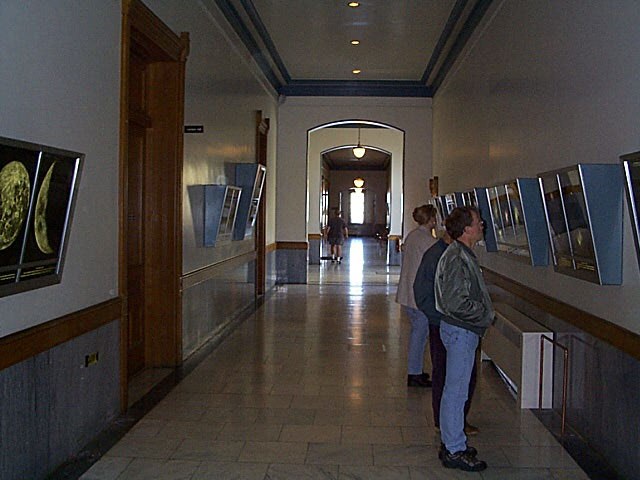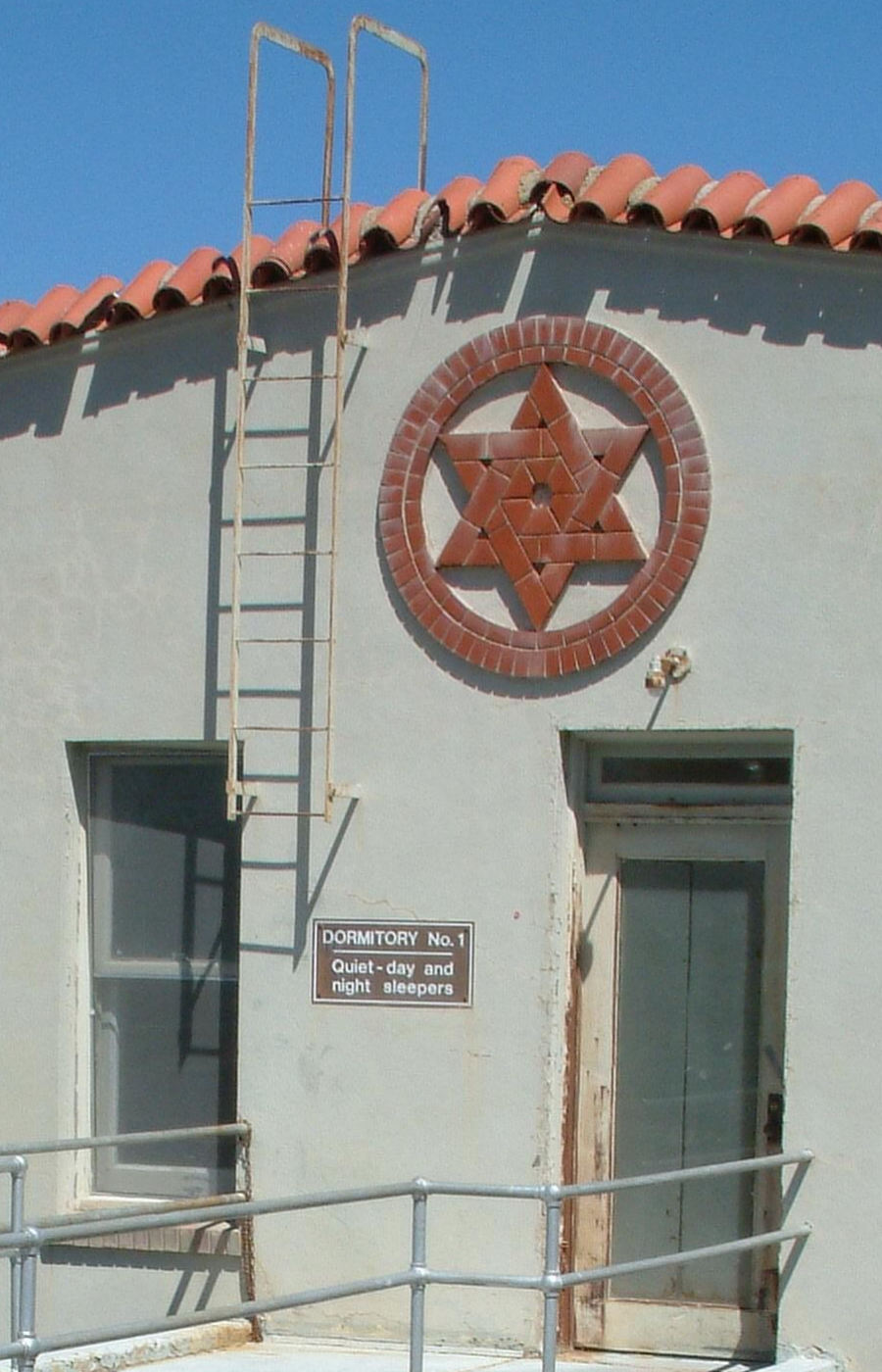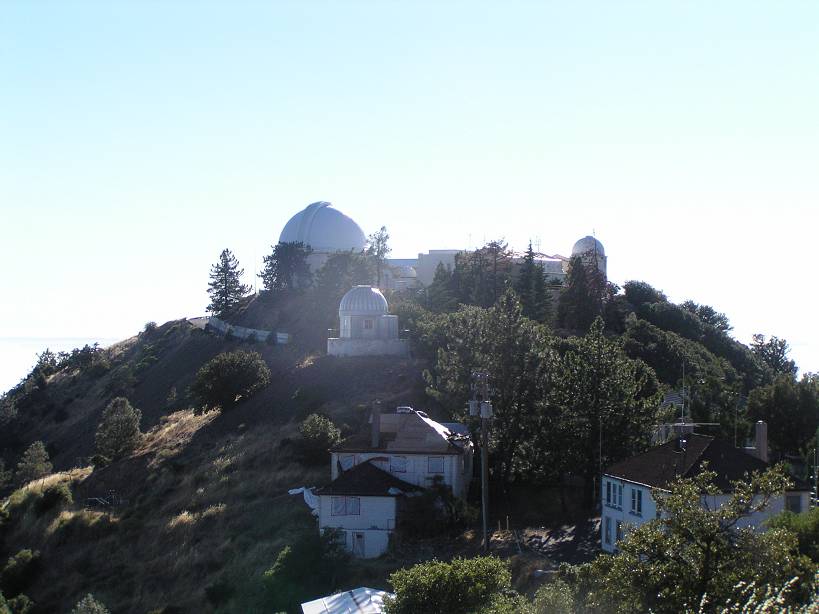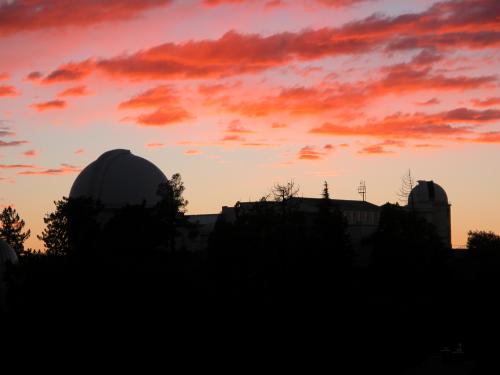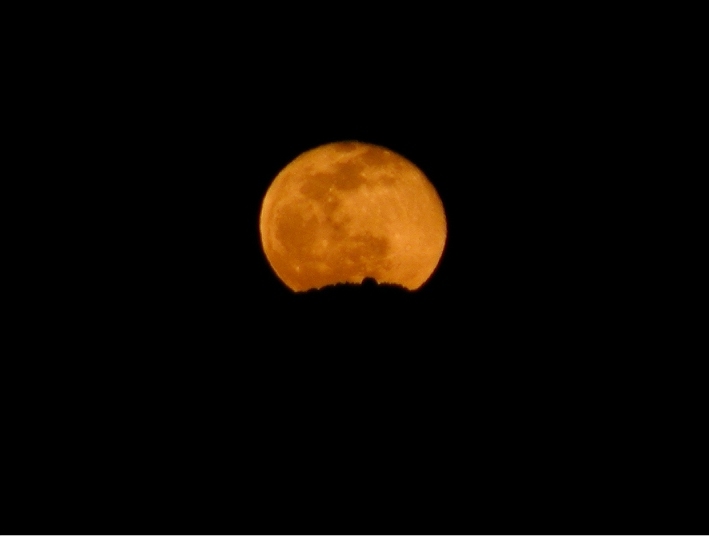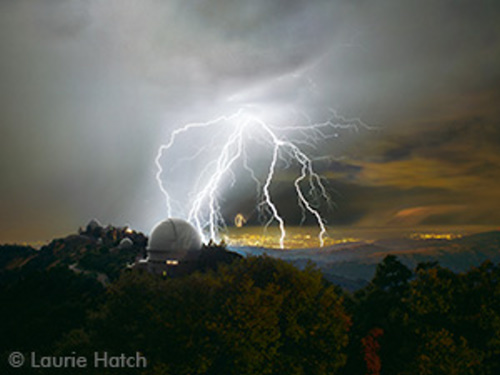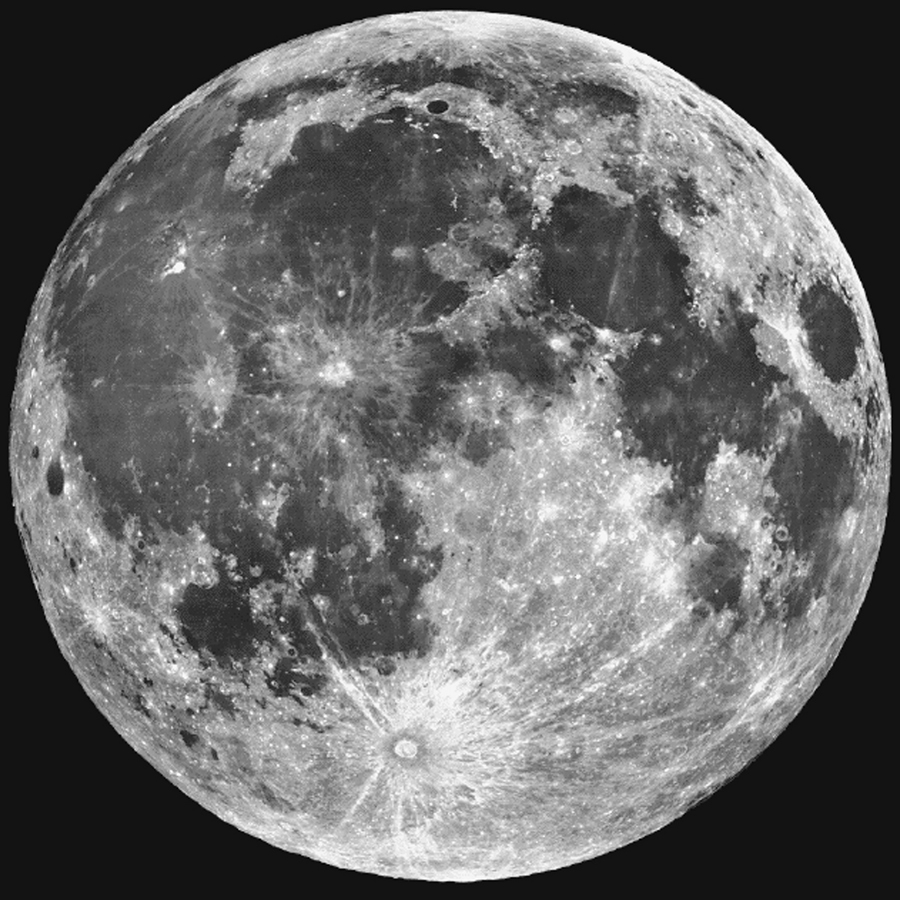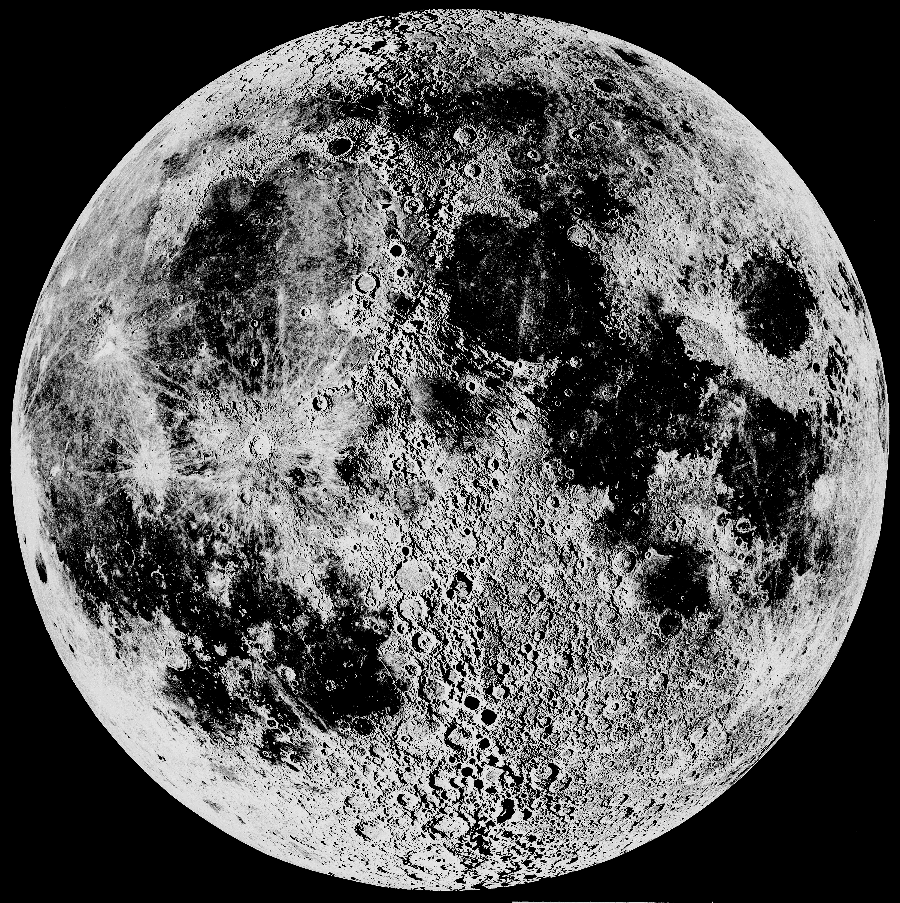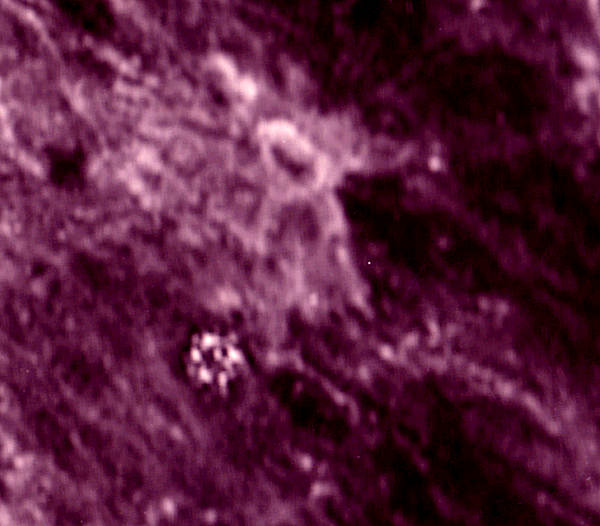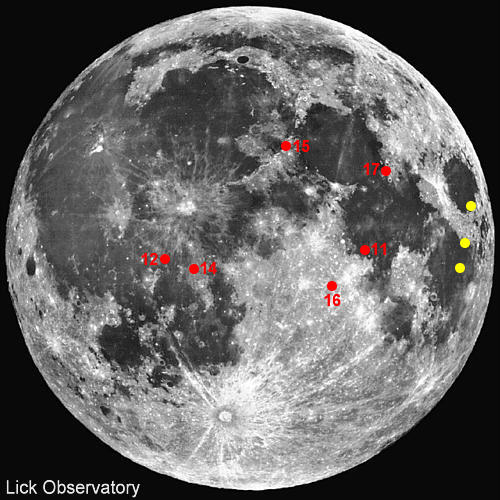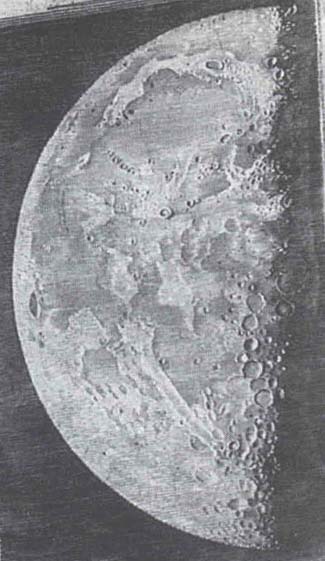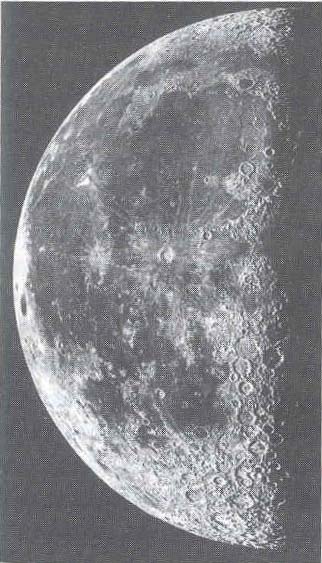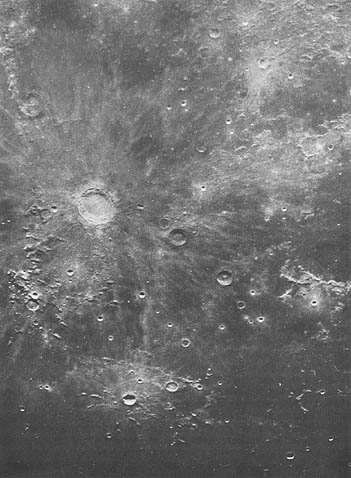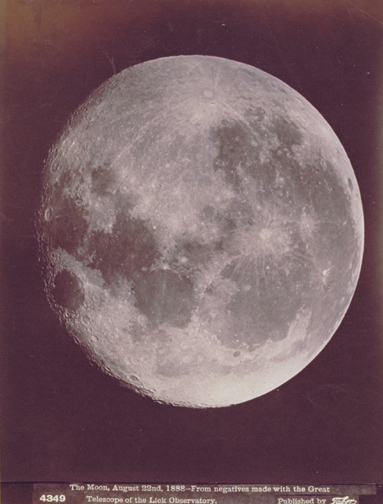|
Mt Hamilton, San Jose, CA ..
A time-exposure photograph of the Lick Observatory shows its laser guide star. |
||||
|
Our Trip to the Lick Observatory July 27, 2007 |
||||
What hath the Raven to do with our journey to the Lick Observatory? After we finished the Bay Area UFO Expo, my duaghter and I decided to spend a few days touring Sna Fransico. Well considering our "Lunar Conspiracy" there was no way we could miss a trip up to the Lick Observatory on Mt Hamilton just outside of San Jose... So we took the hour long drive up the winding road to hunt for pictures of the Moon... When we pulled into the parking lot, we met Johnny Anonymous who had the same idea... After exchanging greetings he told us he had just taken the short tour of the original 36" refractor telescope. During the tour the lady tour guide had talked about James C Lick literally being buried beneath the telescope... at which point there was a loud 'tapping' at the window of the dome... ( I will let Johnny put that in his own words)... Well as it happened there was
a pair of Ravens sitting in a tree just by the parking lot, nuzzling beak
to beak. My daughter took a photo of the pair. The trees are just
on the right, the dome is the Lick 36" scope
|
||||
|
Johnny figured he might as well
join us as we took our tour, and he commented... "Wouldn't it be weird
if the Ravens did that again during the speech?" Below is the inside
of the Lick 36" dome. The floor acyually raises and lowers depending on
the angle of the scope...
Wendy Hansen was the lady who gave us our tour... and sure enough just as she was talking about Jame's Lick tomb beneath the scope there was a very loud knocking on the dome... The fellow standing next to me said out loud "What the heck is that?' To which my daughter burst out "Oh it's just the Ravens!" Wendy just smiled. So this was an erie start of an interesting trip... |
||||
In the heart of the Diablo range, east of San Jose, the observatory sits at a height of 4200' (1.2km). The observatory is the legacy of James Lick, the eccentric millionaire who is buried beneath one of the large telescopes there. You take the Hwy 134 (Alum Rock Road) exit from Hwy 680 and go east a short distance and turn right on 134... It takes about an hour to reach the top... it takes about an hour to climb this road.. tt's winding sharp curves with many switchbacks are a thrill or a terror depending on your point of view (and driving skills) There are blind curves, sharp
drop offs with no baracades and no shoulder... at points the driver cannot
see the edge of the road on the uphill trip. And did Ii mention its about
1 1/2 lanes wide? Quite an adrenalin moment when a speeding local comes
down the center of the road... or you have to back down a mile to let a
truck pass as Johnny had to do...
Winding road on the Mount Hamilton Range. San Jose, California, USA Visit the Galleria, they have
some beautiful images of the trip up.
|
||||
The first thing we noticed is the lack of pictures of the moon on display. Here in this hallway there were a few in light boxes. On two of them we spotted some interesting anomalies so Johnny used his digital camera to attempt to take a picture... [add results here] During the question period in the tour Johnny asked Wendy about access to the archives... [add johnny's comments here] When the tour was completed Wendy said she would open the gift shop for half an hour and answer any more questions there... AH Finally we can get some moon photos !! Yippee Well there were a small set of 8x10 photos of partial images of the moon... and one wall size poster of a composite of the moon making a full moon printed in 1988. There was no photo info on the poster and we are still tracking down who took it and when as of this writing. [contact Wendy and ask her if she knows, and get Don's contact info, as he knew who took it but we were neglect in writing it down or getting his email] Well the poster showed a really odd anomaly... one that stood out like a beacon. So we each bought a poster. The amazing thing is that they display the poster... why this amazed us will be clear shortly when we show the scan... Johnny again reminded her that she promised to get us information about the archives... [Oh yeah... forgot... she started to look up info, then said "how about I email you the info... Johnny looked at me and rolled his eyes like "Okay here we go..." ] [ Wendy had earlier in the dome said the archives had been removed to the University and would not be available for viewing for 2 to 5 years. The point was she would find us a contact] I asked her why are there no other images of the moon available... as they had the Nickel 40-inch reflector and the the 120-inch Shane reflecting telescope. She was very evasive and merely said that astronomers prefered to 'look at other things'. I showed her our poster of the full color moon taken by Mike's 10 inch scope in Britain but other than a 'nice picture' we got no more comments. As she helped another customer she was asked a question and made a comment about the dark side of he moon. I was surprized to hear this from someone at the Lick so I pointed out that "there is no dark side of the moon... only the farside" She said "...well the side we don't see... " then looked me in the eye and said 'your correct' and we left it at that... As a side note we had previously written to Mt. Palomar Observatory asking the same question... here is the reply: Hi Ron, I haven't seen any images of the Moon from Palomar either. It is possible that some were taken long ago, but astronomers would rather explore the Moon with spacecraft and use the big telescopes for observing much, much fainter objects. Clear skies, - Scott
|
||||
|
. The tour of the 120 nch Shane telescope is a self guided tour that lets you into a room with a plate glass widow through which you can view the scope and listen to a video. Johnny with his usual charm manages to get us inside for the "A" Tour,. Above is Zorgon (left) with his daughter Raquel and Don Wright standing in front of the 120" Shane Reflector. Johnny is taking the photo. [add more info on Don here] |
||||
|
. The Birr Castle Demesne, Ireland August, 2006 Part of the archives room. This photographer was perusing correspondence from J. L. E. Dreyer to the 4th Earl of Rosse. Other noted astronomers whose letters to the 3rd and 4th Earls are included in the boxes seen here include William and John Herschel and E. S. Holden (the latter being the first Director of California's Lick Observatory) among many, many others. Lick archival material does not circulate but may be consulted in the Special Collections Reading Room. Some titles and papers are stored remotely but may be recalled for use. Researchers are encouraged to contact Special Collections staff in advance to arrange for retrieval and a reading appointment. Lick archival material that has not yet been processed remains unavailable to researchers. Photocopying or other forms of reproduction of cataloged and processed Lick archives material may be possible; please consult the staff in Special Collections. For assistance locating or accessing Lick archival material or in using Lick findings aids, specialized databases, or Cruzcat catalog entries, please contact Special Collections. Researchers may:
Hi Johnny, I called the Lick Observatory Archives & spoke with someone about the archive's status. Basically I was told what I indicated to you, when you visited. Much of the archival material is boxed up, awaiting the move to a new facility. Unfortunately the move may take as long as 2 years. But on the positive side, not all the material is boxed up & they may be able to access material for you, depending upon your request. So you may contact them at:
831-459-2571
Thank you for your interest!
Wendy Hansen
|
||||
|
. Behind the Lick Observatory, there is a tower with all kinds of antena and other equipment (some not visible from this view) The area was fenced off and marked 'restricted' [More from Johnny] From the Lick...
Looking East by Northeast Six domes are visible in this view. The largest dome holds the Shane 3-meter. The 3-meter is scheduled every night of the year for a wide variety of research programs. The much smaller Crocker dome, housing a specialized telescope for the discovery of exoplanets (planets orbiting other stars), is to the left of the 3-meter. High and to the 3-meter's right, the 0.8-meter Katzman Automatic Imaging Telescope (KAIT) is seen in the distance atop Kepler peak, where every clear night it searches for supernovae (exploding stars) in other galaxies. The dome just to the right of the 3-m will house Lick's newest telescope, the 2.4-meter Automated Planet Finder (APF), operated by the California & Carnegie Planet Search. Still under construction, APF will begin its search for exoplanets this year, using a different technique than the Crocker dome project. APF will ensure Lick's continuing world leadership in the field of exoplanet discovery and research. For a closer look, visit the APFcam. Almost obscured by the APF dome, the dome of the 0.5-meter Dual Astrograph can just be glmpsed behind and to the right of APF. The Astrograph, which did fundamental work for half a century, is now effectively retired. The silver dome of the Tauchman 0.5-m reflector is seen in the lower right corner of the picture. The Tauchman has been long retired from research but provides Lick residents with views of the heavens. |
||||
|
.
On the main Dormitory building Johnny spotted this Masonic six pointed star. We thought it curious that it would be on here so prominently displayed [More from Johnny] |
||||
|
.
Looking back at the main buildings from the 120" Shane Reflector Dome ..
Sunset over Lick Main Buildings ..
March 7, 2004 Full Moon rising over Lick Observatory... ..
|
||||
|
April 19, 1999 ..
Credit: Lick Observatory April 19, 1999 Explanation: Earth has one moon. A symbol in famous love songs, movies, poems, and folklore, many myths about the Moon date back to ancient history. In fact, the name Monday originates from Moon-day. The Moon glows by light it reflects from the Sun and is frequently the brightest object in the night sky. The Moon orbits the Earth about once a month (moon-th) from about 1 light second away. The above-pictured Full Moon occurs when the Moon is nearly opposite to the Sun in its orbit. The Moon's diameter is about 1/4 that of the Earth, and from the Earth's surface appears to have almost exactly the same angular size as the Sun. Recent evidence indicates that the Moon formed from a colossal impact on the Earth about 4.5 billions of years ago, and therefore has a similar composition to the Earth. Humans walked on the Moon for the first time in 1969. If you search for Lick Observatory Moon pictures this one will appear on al,ost all websites. The older ones are now very hard to find. This image does NOT show the Anomaly |
||||
|
January 1946 ..
|
||||
|
May, 1988 Poster ..
[Temporary Scan] |
||||
|
..
Apollo and Luna Landing Sites |
||||
|
Mellan (1636) vs Lick Observatory (2002) ..
These images compare an iconic 20th century photograph
of the last quarter Moon with a truly amazing engraving of a similar lunar
phase produced in 1636 by the French artist Claude Mellan based on
his observations through a telescope made with lenses provided by Galileo.
Although the level of detail represented by Mellan is obviously a little
less than that shown in the Lick Observatory photo, the overall resemblance
is striking. More importantly, as we show on our Photo-Drawing
Comparison page, the detail Mellan depicts is virtually identical to
what we are able to photograph through our modern 1-inch aperture Galilean
replica. (Photographed through the Galilean refractor on November 26, 2002.)
- SOURCE
|
||||
|
..
|
||||
|
August 22, 1888 ..
"From negatives made with the Great Telescope of the Lick Observatory." - SOURCE |
||||
 Mt
Wilson Live Cam Mt
Wilson Live Cam |
||||
|
Experiment at Lick Observatory .. Lawrence Livermore National Laboratory PDF |
||||
| FAIR USE NOTICE: This page contains copyrighted material the use of which has not been specifically authorized by the copyright owner. Pegasus Research Consortium distributes this material without profit to those who have expressed a prior interest in receiving the included information for research and educational purposes. We believe this constitutes a fair use of any such copyrighted material as provided for in 17 U.S.C § 107. If you wish to use copyrighted material from this site for purposes of your own that go beyond fair use, you must obtain permission from the copyright owner. | ||||
|
|
